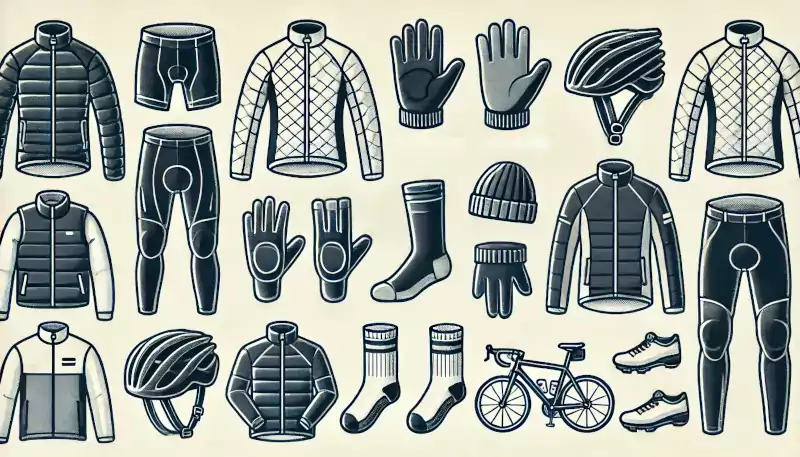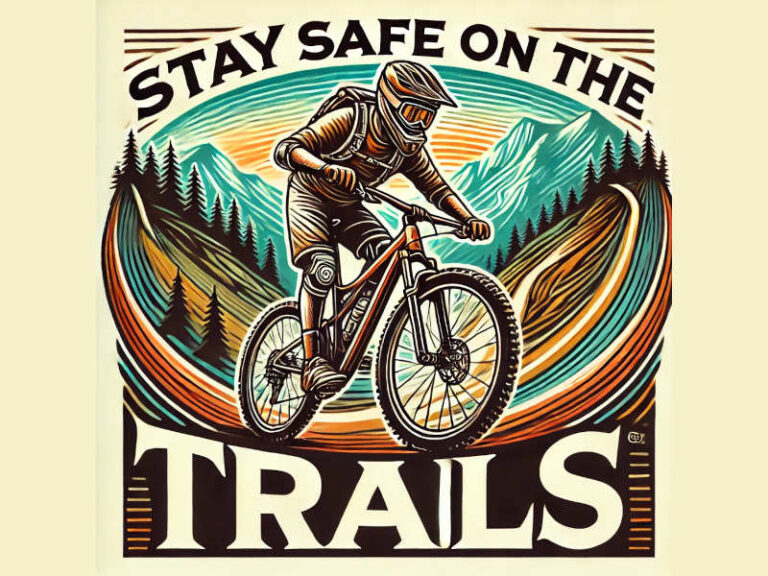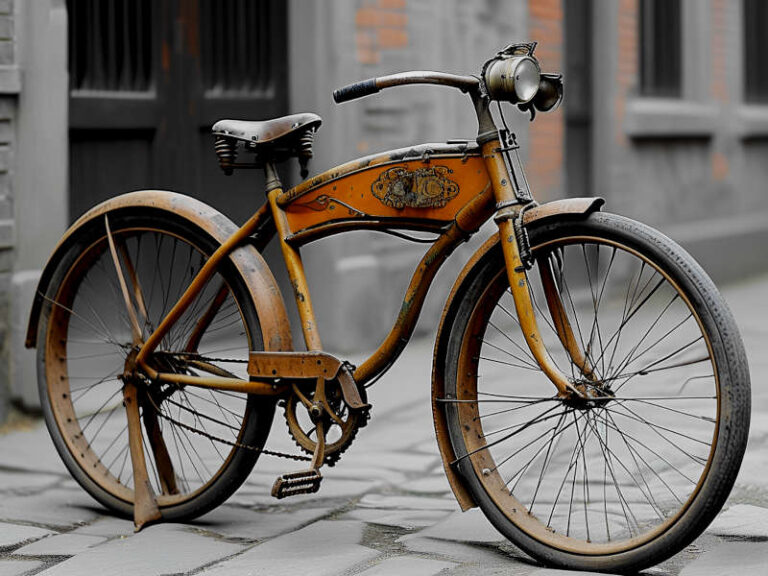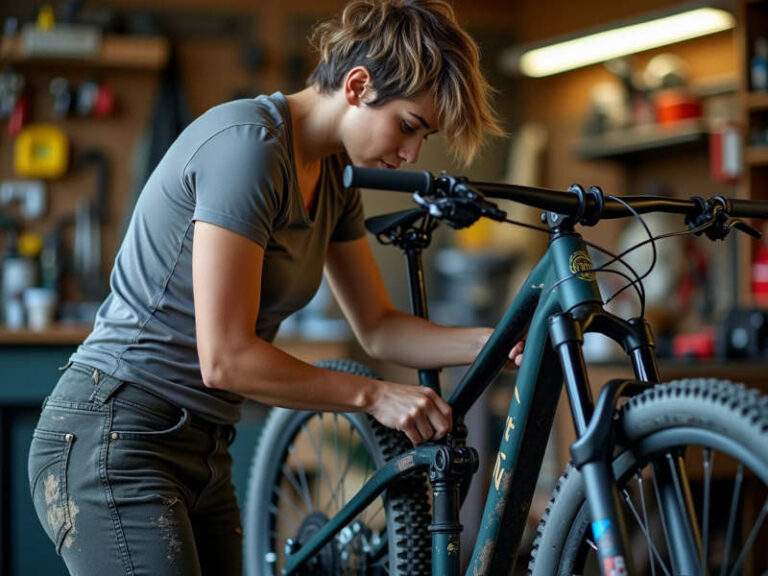Essential Mountain Biking Gear for Winter Riding

Winter riding isn’t just biking in colder weather; it’s an adventure that’s as exhilarating as it is demanding. As the saying goes, “There’s no such thing as bad weather, just bad gear.”
This rings especially true for mountain biking in winter, where the right equipment separates fun rides from frosty misery.
Why Winter Riding Is Different
In winter, trails morph into icy, muddy, or snow-covered challenges. Shorter daylight hours, plunging temperatures, and unpredictable conditions mean you need gear to stay warm, dry, and visible.
Unlike summer rides, when a pair of shorts and a jersey will suffice, winter biking requires thoughtful layering and weather-specific gear.
Clothing Essentials for Winter Mountain Biking
A ‘typical’ winter jacket can be great for walking or doing outdoor activities like building a snowman with your kids. But when cycling, it’s bulky and does nothing to maximize your comfort.
I rode for several years using a winter jacket and personally experienced its inability to deal with the sweat generated from a decent ride. I ended up wet from the inside out, which turned into cold if I stopped or rode slow for periods of time. Definitely not fun and it limits how long you can ride.
Instead…
Dressing in three simple layers—a base layer, a middle layer, and an outer layer—helps you ride through cold weather with ease. Each layer serves a clear purpose: keeping sweat away, holding in heat, and shielding you from wind and snow. With the right approach, you’ll stay cozy without overheating or feeling like a bundled-up snowman.
Here’s how to make it work for you:
Jump to the area you are most interested in: Upper Body | Lower Body | Feet | Head & Neck | Pogies
Upper Body
Base Layer
A base layer is the foundation of your winter riding wardrobe. Worn directly against the skin, its main job is to manage moisture by wicking sweat away. This helps keep you dry and prevents that dreaded clammy feeling that can quickly lead to a chill. A good base layer is lightweight, snug-fitting, and made from materials that balance warmth and breathability. Whether you’re climbing steep trails or cruising downhill, a quality base layer sets the stage for a comfortable ride.
Why It’s Important: A good base layer wicks sweat away, keeping your skin dry and warm.
Features to Look For: Merino wool or synthetic materials, snug fit, moisture-wicking.
Recommendations:
- Patagonia Capilene Midweight Crew:
- Exceptional warmth and breathability.
- Lightweight and durable material.
- Flatlock seams to minimize chafing.
- Quick-drying fabric.
- Rapha Thermal Base Layer:
- Premium merino wool blend.
- Excellent temperature regulation.
- Odor-resistant properties.
- Close, comfortable fit.
Mid Layer
A mid layer is your next line of defense against the cold. Sitting between the base and outer layers, it traps heat while still allowing moisture to escape. This layer is key for maintaining warmth during longer rides, especially when the pace slows or the weather turns colder. Mid layers come in various forms, from lightweight fleeces to more insulated options, depending on how much warmth you need.
Why It’s Important: Traps body heat while allowing moisture to escape.
Features to Look For: Fleece or insulated materials, breathable design.
Recommendations:
- Velocio Alpha Long Sleeve
- Polartec Alpha Direct Insulation provides warmth without adding weight.
- Merino 210 Fabric is used on the back and sides, offering thermoregulation and a slim fit.
- Extended collar adds extra neck protection against cold winds.
- Pearl Izumi Quest Thermal Jersey:
- Soft, brushed interior for added warmth.
- Moisture-wicking thermal fabric.
- Full-length zipper for ventilation.
Outer Layer
The outer layer is your ultimate shield against the elements. Designed to protect you from wind, rain, and snow, it keeps the layers beneath it functioning effectively. A good outer layer is both waterproof and breathable, ensuring you stay dry without overheating. This layer is often the most durable and feature-packed, ready to handle tough winter conditions.
Why It’s Important: Shields you from wind, rain, and snow.
Features to Look For: Waterproof, windproof, and breathable.
Recommendations:
- Gore Wear C5 Gore-Tex Active Jacket:
- Lightweight and highly breathable.
- Completely waterproof with Gore-Tex technology.
- Adjustable cuffs and hem for a custom fit.
- Zippered pockets for secure storage.
- Endura MT500 Waterproof Jacket:
- Heavy-duty construction for extreme weather.
- Ventilation zippers for temperature control.
- Durable water-repellent coating.
- Fully sealed seams for total waterproofing.
Extra Warmth – Insulated Vest (aka Gilet)
An insulated vest, or gilet as it’s know in Europe, is a versatile addition to your winter gear lineup. It’s perfect for adding extra warmth to your core without the bulk of a full jacket. These vests are particularly useful on rides with varying conditions, as they can be easily added or removed to adjust your temperature. Look for lightweight, packable designs that provide excellent insulation.
Wear it at the beginning of your ride before you’re warmed up, then throw it into your backpack or bike bag when you get too hot.
Why It’s Important: Adds core warmth without restricting movement.
Features to Look For: Lightweight, packable, wind-resistant.
Recommendations:
- Castelli Aria Vest:
- Ultra-lightweight design.
- Windproof front panel.
- Breathable mesh back.
- Folds compactly for easy storage.
- Assos Mille GT Insulated Vest:
- High-loft insulation for superior warmth.
- Slim fit for layering.
- Reflective details for visibility.
- Water-resistant treatment.
Lower Body
Keeping your legs warm and dry is essential for a comfortable winter ride. The lower body is constantly exposed to icy winds, snow, and mud, making durable and weatherproof gear a necessity. From insulated pants to waterproof layers, your choices here will determine how well you handle cold, wet trails.
For super cold days in biting winter climates that can range from 0F to -40F in places such as in Alaska, North Dakota, Minnesota etc in the USA and in most of Canada, the challenge can be staying warm enough without creating too much bulk.
This is another instance where layering can be your friend. Start with a fitted thermal layer like thermal bib tights, and in colder weather, add insulated cycling pants or a protective weather-proof/waterproof shell on top. If it’s still too cold, add a layer in between the bib tights and shell.
Pants
Thermal Bib Tights
Why They’re Important: Provide warmth and compression while allowing full mobility.
Features to Look For: Fleece-lined, water-resistant, comfortable straps.
Recommendations:
- 7mesh Men’s TK1 Bib Tight:
- Thermal fleece lining for warmth.
- Water-resistant finish.
- Articulated patterning for a better fit.
- Chamois pad for long-ride comfort.
- Castelli Sorpasso RoS Bib Tight:
- Nano Flex 3G fabric for insulation and water resistance.
- Progetto X2 Air chamois for comfort.
- High-stretch design for mobility.
- Reflective elements for visibility.
Insulated Cycling Pants
Why They’re Important: Keeps your legs warm while allowing flexibility.
Features to Look For: Fleece-lined, water-resistant.
- Recommendations:
- 7Mesh Glidepath Winter Pants:
- Tailored fit for unrestricted movement.
- Brushed fleece interior for warmth.
- Durable water-repellent finish.
- Articulated knees for enhanced mobility.
- Endura MT500 Spray Pants:
- Reinforced seat and knee panels.
- Zipped vents for airflow control.
- Waterproof construction.
- Stretchy fabric for a comfortable fit.
- 7Mesh Glidepath Winter Pants:
Waterproof Cycling Pants
Waterproof cycling pants are your go-to for the wettest, slushiest, or muddiest days. They provide a barrier against rain, slush, and mud, ensuring your legs stay dry throughout the ride. While they might be less breathable than insulated pants, they’re indispensable in wet conditions.
Why They’re Important: Protects against rain, snow, and mud.
Features to Look For: Fully waterproof, durable, adjustable cuffs.
- Recommendations:
- Fox Racing Defend Fire Pants:
- Thermal insulation for cold weather.
- Water-resistant finish.
- Robust fabric for trail durability.
- Ergonomic fit for comfort.
- Gore Wear Trail Pant:
- Fully waterproof Gore-Tex fabric.
- Adjustable waistband for a secure fit.
- Zippered pockets for gear storage.
- Pre-shaped knees for added comfort.
- Fox Racing Defend Fire Pants:
Feet
Socks
Thermal Socks: Offer insulation for dry, cold conditions.
Waterproof Socks: Ideal for wet weather.
Advantages of each: Thermal socks keep feet warm but may not stay dry in slush; waterproof socks protect against water but can feel less breathable.
Recommendations:
- Sealskinz Waterproof Cold Weather Socks:
- Three-layer construction for waterproofing.
- Merino wool lining for warmth.
- Stretchable fit for comfort.
- Reinforced toe and heel for durability.
- Swiftwick Pursuit Four Socks:
- Made from premium merino wool.
- Excellent thermal regulation.
- Seamless toe for added comfort.
- Odor-resistant and durable.
Winter Cycling Shoes/Boots
Why They’re Important: Prevent frozen toes by offering insulation and waterproofing.
Features to Look For: Insulated lining, waterproof materials, sturdy soles.
Recommendations:
- Shimano MW7:
- Gore-Tex liner for waterproofing.
- Fleece-lined interior for warmth.
- Vibram sole for superior grip.
- Adjustable ratchet closure system.
- 45NRTH Wolvhammer:
- Aerogel insulation for extreme cold.
- Waterproof breathable membrane.
- Reflective details for safety.
- Rugged outsole for icy conditions.
Head & Neck
Protecting your head and neck is vital during winter rides. Losing heat from these areas can quickly sap your energy and comfort. A combination of proper headgear and neck protection ensures you stay warm, while specialized designs for biking maintain breathability and fit.
Headgear
- Options:
- Beanies/Skull Caps: Thin and snug, these fit under helmets to provide warmth without bulk. Great for moderately cold conditions.
- Winter Biking Helmets: Built with insulated liners and adjustable vents, they balance warmth and breathability. Ideal for prolonged cold-weather rides.
- Ski/Snowboard Helmets: Heavily insulated and windproof, they offer extreme warmth. Best for sub-zero temperatures but may lack cycling-specific features.
Recommendations:
- POC Tectal Race Spin:
- Lightweight and well-ventilated.
- Integrated spin protection.
- Adjustable fit system.
- Extended coverage for added safety.
- Smith Vantage MIPS:
- MIPS technology for impact protection.
- Dual ventilation control.
- Warm ear pads for insulation.
- Compatible with goggles.
Neck Gaiters and Balaclavas
Why They’re Important: Protect against windchill and keep your neck and face warm.
Features to Look For: Breathable, wind-resistant, moisture-wicking.
Recommendations:
- Buff Original EcoStretch Gaiter:
- Versatile for multiple uses.
- Eco-friendly recycled materials.
- Moisture-wicking and quick-drying.
- Lightweight and stretchy.
- Seirus Magnemask Combo Clava:
- Magnetic face mask for easy adjustment.
- Windproof and water-resistant.
- Soft fleece lining for warmth.
- Full coverage for face and neck.
Pogies
Pogies deserve a section of their own because in my opinion they allow the best use of your hands in terms of shifting and braking while keeping them toasty warm.
What are they? They are basically covers for your handle bars that envelop your hands, sort of like a sleeping bag.
Underneath the pogies you can wear your summer cycling gloves so you have the same great dexterity as summer riding – but they keep the wind and cold at bay and I’ve never had cold hands since.
Check out our article dedicated to all the ins-and-outs of bike pogies.
Additional Tips for Winter Riding
- Tires: Use wide, studded tires for better traction on icy trails.
- Lighting: Short days mean high-quality front and rear lights are a must.
- Hydration: Use insulated bottles or insulated hydration tubes to prevent water from freezing.
- Maintenance: Clean your bike after every ride to prevent salt and grime buildup.
Summary
Winter mountain biking is a thrilling way to keep riding all year, but it demands the right gear to stay safe and comfortable. Key essentials include moisture-wicking base layers, insulated and waterproof outerwear, thermal socks, and weatherproof footwear. Protect your head and neck with proper helmets and gaiters, and don’t forget studded tires and reliable lights. With the right preparation, winter rides can be just as enjoyable as summer ones—and a lot more adventurous!






